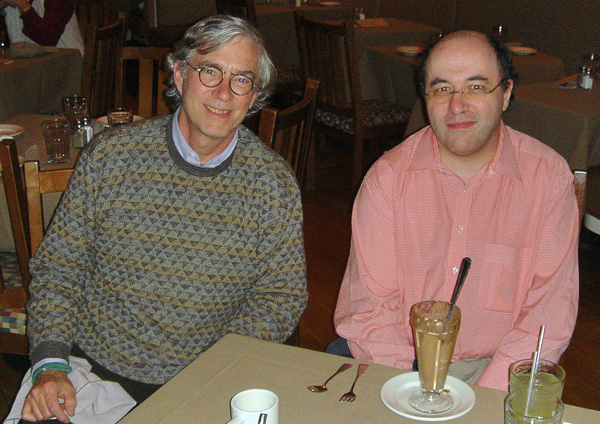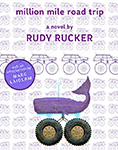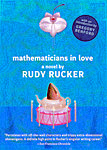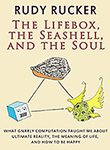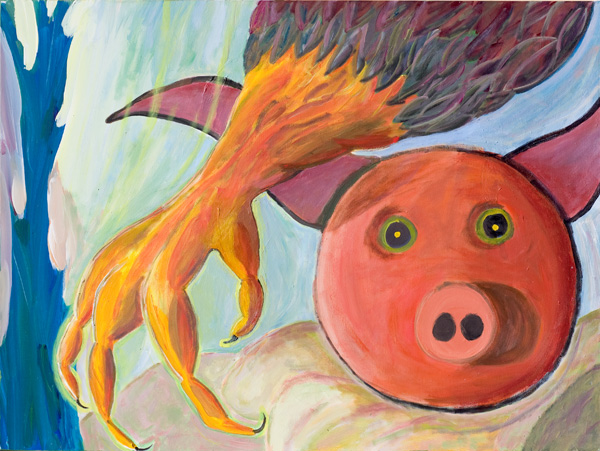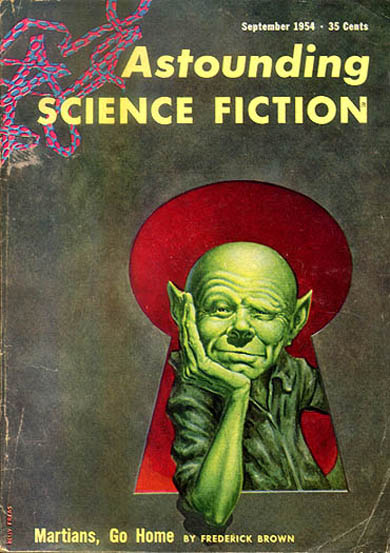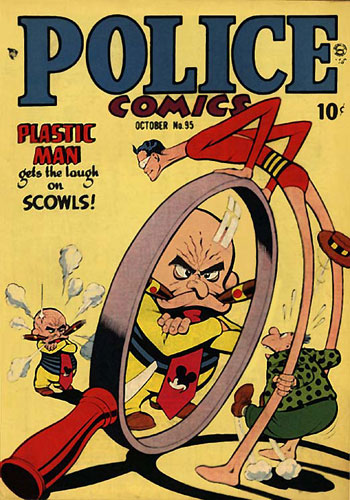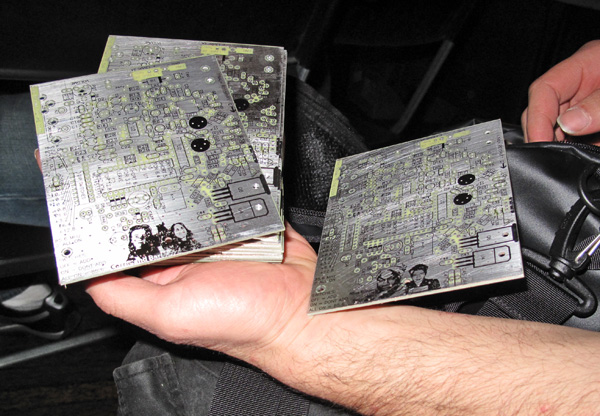After a lifetime of being an SF writer and rejader—and somewhat skittish about fantasy, I’m slowly coming to accept that my new novel, Jim and the Flims, is closer than ever to fantasy. [As of 2016, you browse a free online edition of Jim and the Flims via the book’s page.]
I’m attracted to fantasy just now as I’m tired of making up scientific explanations of things. I just want to go straight for the surrealism without having to incant the by-now-rather-stale rhetoric of quantum-this and dark-matter-that.
So now I’m getting interested in theories about what fantasy literature is and can become. (By the way, today’s illos are still from my trip to Big Sur last weekend.)

I just read a really interesting essay by my friend Farah Mendelsohn (as of 2016, it’s no longer free online), it’s the introduction to her critical volume Rhetorics of Fantasy, which I then proceeded to order a copy of from Amazon. So without having read the book yet, I’ll irresponsibly start outgassing about Farah’s ideas based on what I gleaned from the intro. She distinguishes several modes of fantasy:

Portal-quest. There’s a magic door to another word. The main characters go through, learn about the other world, get to know it well enough to achieve something, and then come back. Things from the other world don’t come through the portal to our world.
Immersive and Intrusive. In the immersive mode, the book simply starts out and is set in some fantastic other world. In the intrusive mode, creatures from another world appear in ours. The mood for intrusive fantasy is one of shock and amazement, what Farah Mendelsohn calls an “awestruck or skeptical tone.” She points out that it’s an effort to keep up this tone of surprise, and to this end, the oddness of the intruders often escalates over the book.
Liminal. Like the intrusive fantasy, the liminal fantasy is set in our world, but there the fantastic elements are fleeting, barely glimpsed. Maybe you see an elf in your back yard, rather than a giant were-pig rampaging down Wall Street. Or a little birdie talks to you. Mendelsohn suggests that in the liminal fantasy tales, the characters don’t get all worked up about the odd things, they take them as a normal part of life. This would set liminal fantasy apart from to intrusive fantasy.

It always surprises me to find such simple archetypal forms underlying such seemingly open-ended forms as fiction in general and fantasy and science fiction in particular. We stick to a few patterns that work—patterns perhaps suggested by basic aspects of our innate psychology.
How do Farah’s modes apply to my plans for Jim and the Flims?
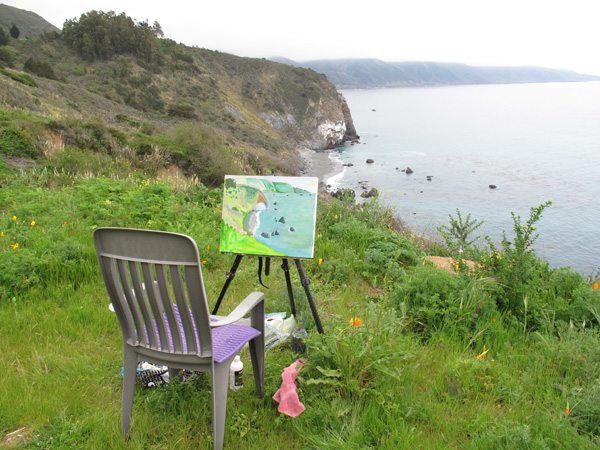
I found I was almost viscerally compelled to put a portal into Jim and the Flims. I was floundering, and the notion of the portal was like a life-preserver to grab.
With a portal, you’re setting several things in play. One is that you have an alternate world. A second is that there will be limited access to the portal, that is, only a few characters can go through it. A third is that finding the homeward portal from the other world may take some effort. A fourth is that the portal can lead aliens to our world as well as leading us to theirs.
In Postsingular and Hylozoic, I had an alternate world, but here the “portal” wasn’t a specific location, but rather a certain meditative technique—akin to a magic spell. And in Mathematicians in Love, I had a certain device that would turn some region of space into a portal. You might think of it as a mechanized spell-caster.
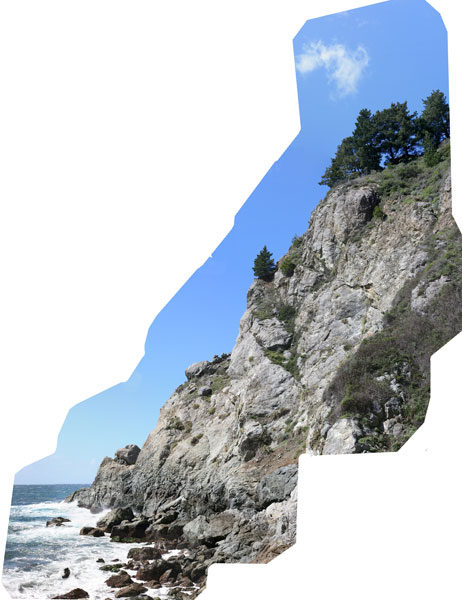
[Merged panorama of a cliff at the end of a little-known and unmarked public path to the sea near milepost 38 and Partington Creek in Big Sur, a little north of Pfeiffer-Burns park. The entrance looks like a gated fire road.]
Of course SF is rife with portals—that’s often what faster-than-light travel devices look like: magic doors. But even a ship that you get inside and then get out of is a kind of portal, particularly if the ship makes a long trip very rapidly. The animated UFO that Frek rides in Frek and the Elixir serves as a portal.
The same portal issues arise with these variations: limited access to the portal, the difficulty of getting back home, and the two-way connection that the portal involves.

[Lucia Lodge, my favorite spot to stay in Big Sur, located some 30 miles south of the “town” of Big Sur.]
A far-future SF novel has the quality of an immersive fantasy novel—you’re in some place where everything is different, and you’re seeing through the eyes of a native, and slowly you get your bearings. The SF equivalent of intrusive fantasy is to introduce have the strange things intrude via a new invention. Or they might arrive as alien invaders.
Jim and the Flims is set in our present time, and it takes the form of an intrusive fantasy. That is, we start out in our familiar world, and the fantastic elements trickle in. Yes, there is a portal, but we first become aware of the portal because of some fantastic beings who’ve used the portal to intrude into our world.
Rather than continuing to escalate the oddity of the intruders, I plan to go the whole hog and have my characters go through the portal to the alternate world themselves. They get used to it pretty quickly, so we get more into the immersive than the intrusive mode, and they don’t have to act awestruck all the time.

Regarding liminal fantasy, I’ve often thought about a notion that there are other beings around us all the time, things we glimpse from the corners of our eyes. I guess this is a liminal fantasy concept. I like the notion that the world is full of living beings or spirits of place, akin to gnomes, elves and fairies. The story I wrote with Paul DiFilippo, “Elves of the Subdimensions,” is a liminal fantasy that turns intrusive, with, come to think of it, a kind of portal.
When starting Jim and the Flims I was thinking along these lines, imagining an alternate world the overlays and is wholly contiguous with ours. But now it seems less likely I’ll use that mode—probably it’s enough to be using the portal-quest and intrusive fantasy modes.
At least now, thanks to Farah, I have a clearer notion of what it is that I’m up to! Now I have to actually read some more of her book…
As mentioned above, as of 2016, you buy an ebook or paperback — or browse a free online edition — of Jim and the Flims via the book’s page. In the end, I backed off from total fantasy and ended up inventing SF-style “explanations” for all the bizarro surreal stuff in the book. But in any case, thinking in terms of fantasy was liberating. Visions first, explanations later!
